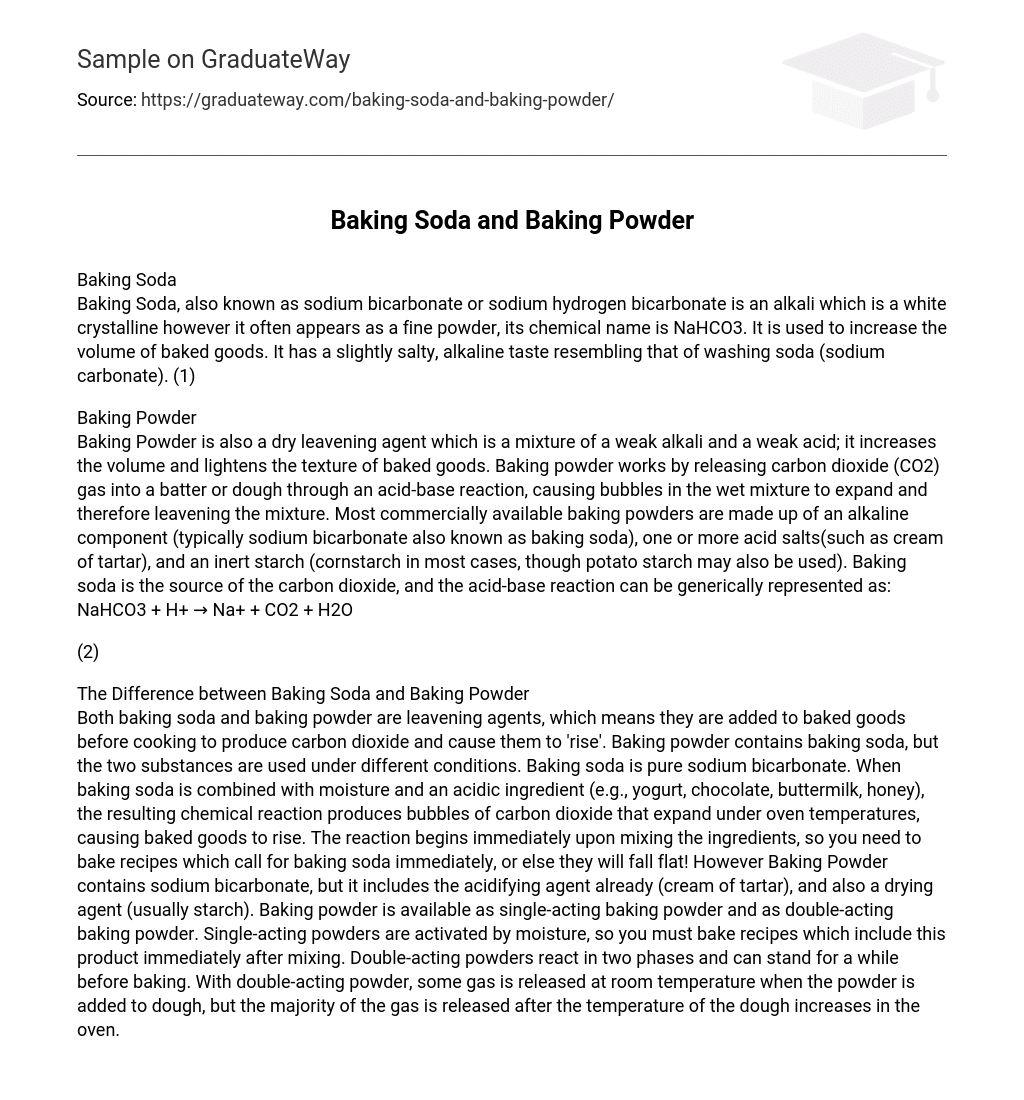Baking Soda
Baking Soda, also referred to as sodium bicarbonate or sodium hydrogen bicarbonate, is an alkaline compound. It exists in the form of a white crystalline substance or fine powder with the chemical name NaHCO3. Baking Soda is utilized to increase the volume of baked goods and possesses a mildly salty, alkaline taste akin to washing soda (sodium carbonate).
Baking Powder
Baking Powder is a dry leavening agent that contains a mixture of a weak alkali and a weak acid. Its main purpose is to increase the volume and lighten the texture of baked goods. Baking powder functions by releasing carbon dioxide (CO2) gas into a batter or dough through an acid-base reaction. This reaction causes bubbles in the wet mixture to expand, ultimately leavening the mixture. Most commercially available baking powders consist of baking soda (sodium bicarbonate), one or more acid salts (such as cream of tartar), and an inert starch (usually cornstarch, but sometimes potato starch). Baking soda acts as the source of carbon dioxide, and the acid-base reaction can be represented as: NaHCO3 + H+ → Na+ + CO2 + H2O.
The Distinction between Baking Soda and Baking Powder
Both baking soda and baking powder are types of leavening agents used in baking. They are added to baked goods before cooking to create carbon dioxide and make them expand or “rise.” Baking powder actually includes baking soda, but each ingredient is used in distinct circumstances.
Baking soda is pure sodium bicarbonate and when combined with moisture and acidic ingredients like yogurt, chocolate, buttermilk, or honey, it undergoes a chemical reaction. This reaction generates carbon dioxide bubbles that expand during baking due to oven temperatures, resulting in the rise of baked goods. To ensure optimal results, it is crucial to promptly bake recipes containing baking soda as the reaction commences immediately and postponing baking will lead to flat baked goods!
Nevertheless, Baking Powder comprises sodium bicarbonate alongside an acidifying agent (cream of tartar) and a drying agent (usually starch). It is obtainable in two forms: single-acting and double-acting. Single-acting powders necessitate prompt baking after mixing since they are activated by moisture. Conversely, double-acting powders undergo two stages of reaction and can be left to rest prior to baking. When utilizing double-acting powder, a portion of gas is emitted at normal room temperature upon addition to the dough, while the majority of gas is released during baking as the temperature of the dough increases.





